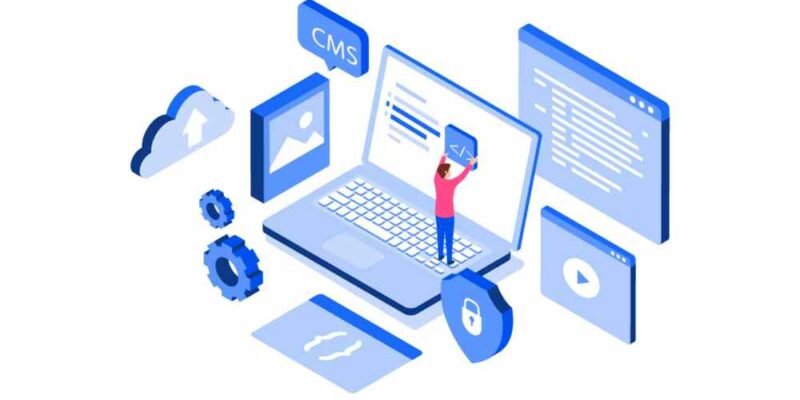Are you struggling with protecting sensitive user data and preventing cyberattacks?
Balancing tight deadlines with the ever-evolving landscape of security threats can be overwhelming.
But don’t worry—there are proven best practices that can help you build secure and resilient web applications. By implementing robust authentication methods, keeping your software up to date, and adopting other key strategies, you can ensure the security of your web application.
Let’s dive into the essential steps to keep your applications safe and secure.
5 Best Practices for Secure Web Development
To help you navigate the complex world of web security, we’ve compiled a list of best practices that every web developer should follow. Whether you’re new to web development or have some experience, these guidelines will help you build more secure websites.
Understanding the Basics of Web Development Security
Before diving into specific practices, it’s crucial to understand the basics of web development security. This involves creating and maintaining websites, and it encompasses everything from website design to coding and server management.
Secure web development means incorporating security measures at every stage of the process. Security should not be an afterthought; it must be integrated from the start.
This proactive approach helps identify and mitigate potential vulnerabilities early and ensures a robust foundation for your website.
Secure Web Development Tactics
Secure Coding Practices
One of the fundamental aspects of secure website development is writing secure code. This involves:
- Input Validation and Sanitization: Always validate and sanitize user inputs to prevent the processing of malicious data. This step is critical to avoid attacks such as SQL injection and cross-site scripting (XSS).
- Avoiding Common Vulnerabilities: Familiarize yourself with common security vulnerabilities and how to prevent them. Use frameworks and libraries that offer built-in protection against these threats.
HTTPS and SSL/TLS Implementation
Using HTTPS is no longer optional; it’s a necessity for secure web development.
- Importance of Using HTTPS: HTTPS encrypts the data transmitted between the user’s browser and your server. This encryption protects sensitive information from being intercepted by malicious actors.
- How SSL/TLS Certificates Work: SSL/TLS certificates establish a secure connection. They authenticate your website and ensure data integrity, giving users confidence that their information is safe.
Authentication and Authorization
Proper authentication and authorization mechanisms protect user accounts and sensitive data.
- Implementing Strong Password Policies: Encourage users to create strong, unique passwords. Implement measures to enforce these policies, such as minimum length and complexity requirements.
- Using Multi-Factor Authentication (MFA): MFA adds an extra layer of security by requiring users to verify their identity through multiple methods, such as a password and a code sent to their phone.
- Role-Based Access Control (RBAC): RBAC ensures that users only have access to the resources necessary for their role. This minimizes the risk of unauthorized access and data breaches.
Data Protection and Privacy
Protecting user data is a legal and ethical obligation.
- Encrypting Sensitive Data at Rest and Transit: Always encrypt sensitive data, both when it’s stored (at rest) and transmitted over the internet (in transit). This ensures that it cannot be read even if the data is intercepted.
- Compliance with Data Protection Regulations: Adhere to data protection laws such as GDPR and CCPA. These regulations mandate specific security measures and practices to protect user data and privacy.
Regular Security Audits and Penetration Testing
Regularly testing your website for security vulnerabilities is crucial.
- Importance of Regular Security Audits: Conduct regular security audits to identify and fix potential vulnerabilities. These audits help ensure that your security measures are up-to-date and effective.
- Benefits of Penetration Testing: Penetration testing involves simulating attacks on your website to identify weaknesses. This proactive approach helps you address issues before malicious actors can exploit them.
Secure APIs
APIs are a common target for attackers, so securing them is essential.
- Best Practices for API Security: Implement authentication and authorization mechanisms for your APIs. Validate all inputs and outputs and ensure that data is encrypted.
- Using Secure API Gateways: API gateways provide an additional layer of security by managing API traffic, enforcing security policies, and detecting threats.
Tools and Technologies for Secure Web Development
Various tools and technologies can help enhance the security of your website.
- Overview of Popular Tools and Technologies: Tools such as web application firewalls (WAFs), intrusion detection systems (IDS), and security information and event management (SIEM) solutions can significantly boost your security posture.
- How These Tools Help in Enhancing Web Security: These tools provide real-time monitoring, threat detection, and automated responses to potential security incidents, making it easier to manage and mitigate risks.
Training and Awareness
Security is a team effort, and everyone involved in website development should be aware of best practices.
- Importance of Training Developers on Security Practices: Regular training sessions help developers stay updated on security threats and techniques. This knowledge is essential for implementing effective security measures.
- Encouraging a Culture of Security Within the Development Team: Foster a culture where security is prioritized. Encourage team members to share knowledge, report potential vulnerabilities, and continuously improve security practices.
Case Studies and Examples
Learning from real-world incidents can provide valuable insights into the importance of secure web development.
- Real-World Examples of Security Breaches: Analyze notable security breaches, their impact, and how they could have been prevented. This helps illustrate the real-world consequences of inadequate security.
- Lessons Learned from These Incidents: Highlight the key takeaways from these case studies, emphasizing the importance of implementing best practices to avoid similar incidents.
Conclusion
Ensuring secure website development isn’t just a best practice—it’s a necessity. You can build robust, secure web applications by implementing strong authentication methods, regularly updating software, and staying vigilant against emerging threats.
Remember, security is an ongoing process that requires continuous attention and improvement. Empower your development team with the necessary knowledge and tools to protect your data and users.
Stay proactive, stay informed, and keep your web applications secure. Following these best practices will create a safer online environment and build trust with your users. Keep these tips in mind, and happy coding!
Do Read: Innovative ChatGPT Use Cases Transforming Software Development













